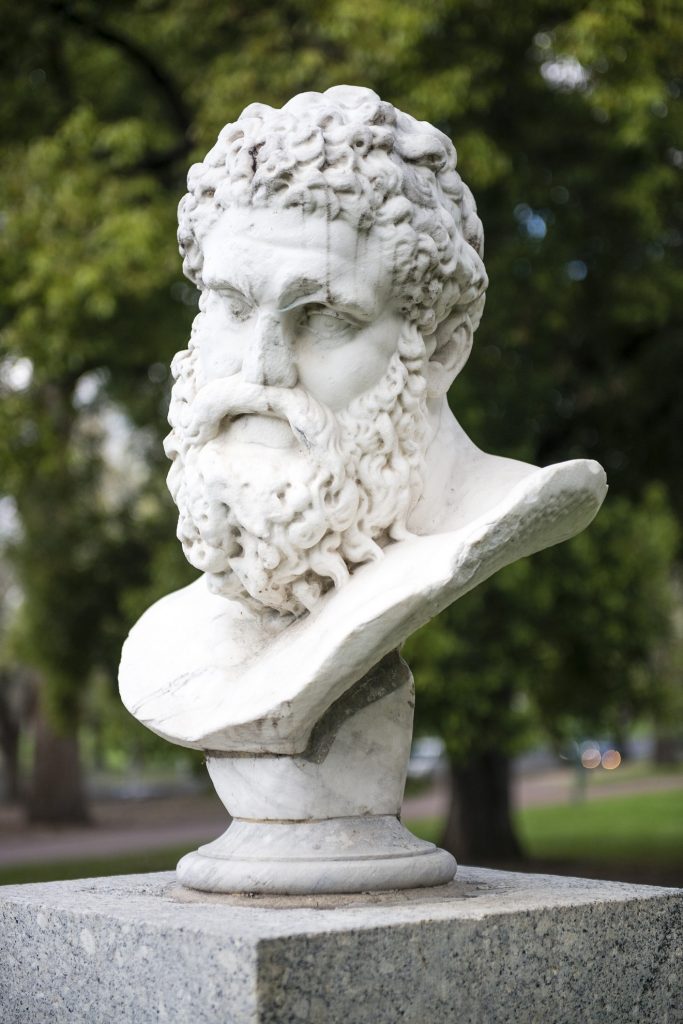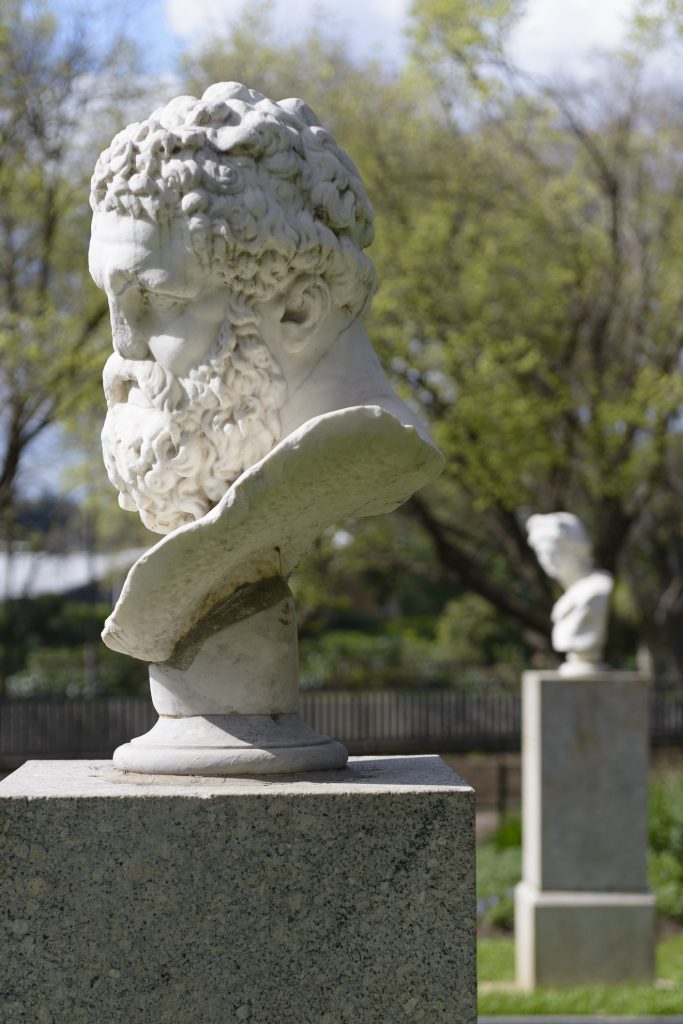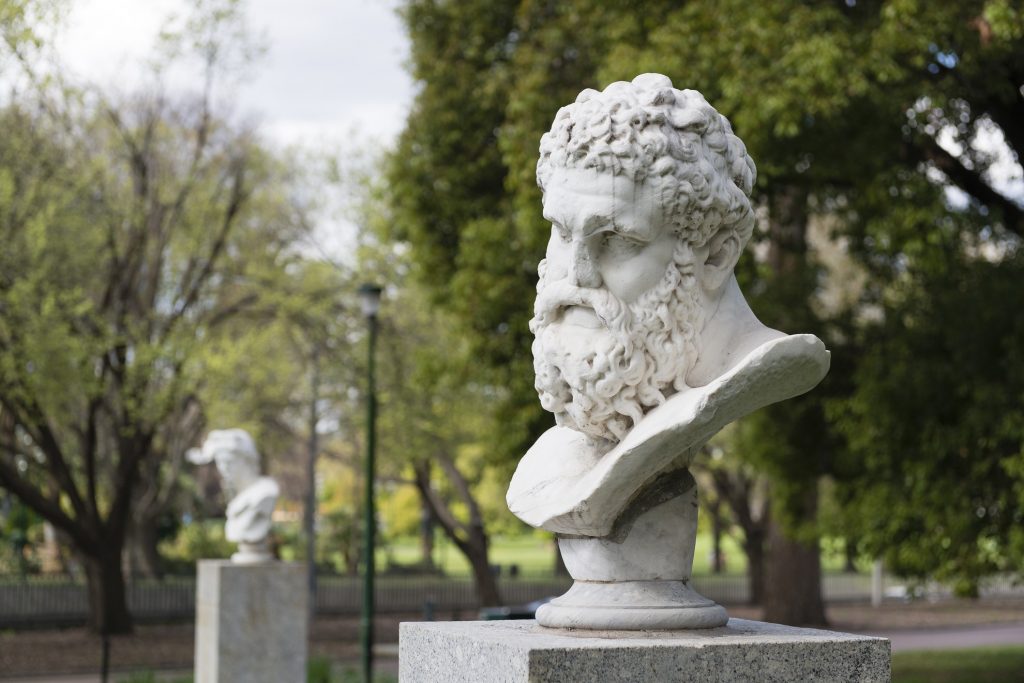Front: HERCULES, STRENGTH AND SERVICE / REPRODUCTION 18TH CENTURY OF BUST ORIGINALLY IN MUSEUM NAPLES / PRESENTED TO THE PEOPLE OF MELBOURNE / BY MR THEODORE FINK
Side: UNVEILED BY THE MAYOR SIR STEPHEN J. MORELL / 2 OCTOBER 1928
Farnex Hercules, Theodore Fink, Marble bust with granite pedestal, Queen Victoria Gardens, Vatican, Rome
Summary
Location: Queen Victoria Gardens
A marble replica bust of Hercules as found in the Vatican Museum, Rome. Dramatically represented with powerful shoulders and head twisted to the right, Farnex Hercules is a classical representation of a powerful hero. The bust sits atop two large granite blocks fixed one on top of the other.
Half god, half-human, Hercules was both the most famous hero of ancient times and the most beloved. Born out of an illicit affair between Zeus and a beautiful mortal woman, Alcmene, Hercules had to bear tremendous hardship at the hand of Hera, wife of Zeus and Queen of the Gods. His is the story of a man so strong and courageous, whose deeds were so mighty, and who so endured all the hardships that were given to him, that when he died, Hercules was brought up to Mount Olympus to live with the gods.
Farnex Hercules was donated to the city by well-known solicitor, politician, newspaper proprietor and educationalist Theodore Fink. He acquired the bust and a replica of the Belvedere Apollo as gifts to the people of Melbourne, when visiting Rome; the works were unveiled in 1928. Fink’s donation marked the end of a tradition of placing copies of classical statuary in Melbourne’s public gardens, a tradition that took root in the 1860s. Most were removed by the 1930s.
The two busts were unveiled on the 2 October 1928 at the main entry to the Queen Victoria Gardens. Fink hoped the busts would 'not only beautify our parks but elevate the taste of people and help them to appreciate fine things, stimulate the national love of beauty, that will express itself in the work of Australian sculptors and artists.' This donation marked the end of a tradition of placing copies of classical statuary in Melbourne's public gardens. Since the 1860s the Fitzroy, Flagstaff and Carlton Gardens had been profusely ornamented with casts of sculptures from the National Gallery and elsewhere. But by Fink's time these had gone out of fashion and were allowed to deteriorate. Most were removed by the 1930s. The position of the busts was slightly altered when Alexandra Avenue was lowered to pass below St Kilda Road.


